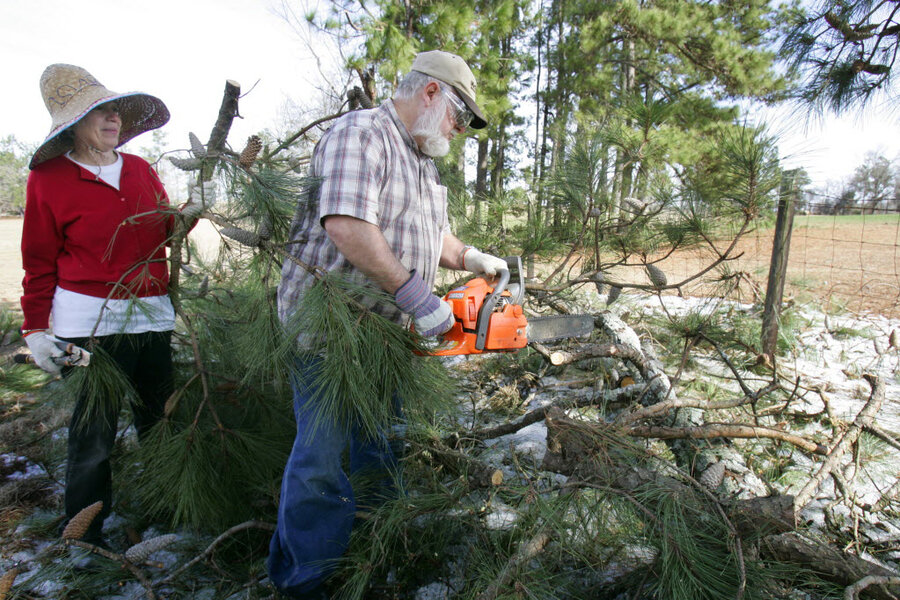4.1 earthquake in South Carolina: What caused 'Valentine's Day Quake'?
Loading...
| ATLANTA
The kind of 4.1 magnitude earthquake that rolled out from its epicenter near Aiken, S.C., Friday night was a once-every-two-decade event, and Southern quakes, it turns out, are far different in origin and impact than the plate-grinding temblors of California.
The South Carolina earthquake alarmed millions of residents who’d just finished digging out of a rare Southern snowstorm, and emergency centers in South Carolina and Georgia lit up bright shortly afterwards.
The quake occurred at 10:23 p.m., according to the US Geological Service. Centered 7 miles west of Edgefield, S.C., it could be detected far to the north in Hickory, N.C., as well as 150 miles away to the West, in Atlanta, where local Facebook boards recounted with mild alarm what was by then a mere computer screen shaker.
Nevertheless, “it's a large quake for that area," USGS geophysicist Dale Grant told the Associated Press. "It was felt all over the place."
No damages were immediately reported in the region, although that assessment could change. South Gov. Nikki Haley, who felt the quake at the Governor’s Mansion in Columbia, dispatched bridge inspection crews Saturday morning to make sure the quake didn’t crack any buttresses. Homeowners near the epicenter were also checking foundations Saturday morning.
Large earthquakes come few and far between in the Southern piedmont. Georgia felt a 4.3 magnitude quake in 1974, fairly near to Friday night’s epicenter. Three similar-size quakes have been experienced in South Carolina since 1970.
South Carolina also bore the brunt of the largest-ever earthquake on the East Coast – a 7.3 magnitude earth-shaker that killed at least 60 people in post-Civil War Charleston, in August 1886. The largest-ever inland South Carolina earthquake measured 5.1 and happened in 1916.
Earthquakes in the US west, especially California, tend to be both more local, more frequent and more intense, caused by the rubbing of tectonic plates against each other. That phenomenon can also be true in the East.
An August 23, 2011 earthquake centered in Mineral, Va., measured 5.8 on the magnitude scale and could be felt by 50 million people. That quake, geologists said, may have been root-caused by a “hot spot,” or magma plume, poking through the thick Eastern plate near the Central Virginia Seismic Zone.
Although South Carolina is laced with small faults that can cause earthquakes, the state as a whole rests fairly firmly right in the middle of one of the North American plates.
According to geologists, Friday’s “Valentine’s Day Quake” may have been caused by the subterranean breakdown of the ancient Appalachian Mountains, where ongoing sedimentation along a smaller fault line may have loosed an underground mega-boulder enough for it to suddenly push upward hard enough to roil the earth. Picture a stack of floating logs, and the shift upwards that happens when a top log is removed.
In the West, massive underground bouldering limits the expanse of seismic shockwaves, but such waves travel more easily and farther through the sandier Appalachian detritus. East of the Rockies, an earthquake can be felt over an area as much as ten times larger than a similar magnitude earthquake on the west coast, according to the USGS.
The East has seen – or, rather, felt – over 2,000 earthquakes since 1973, according to government geologists.








